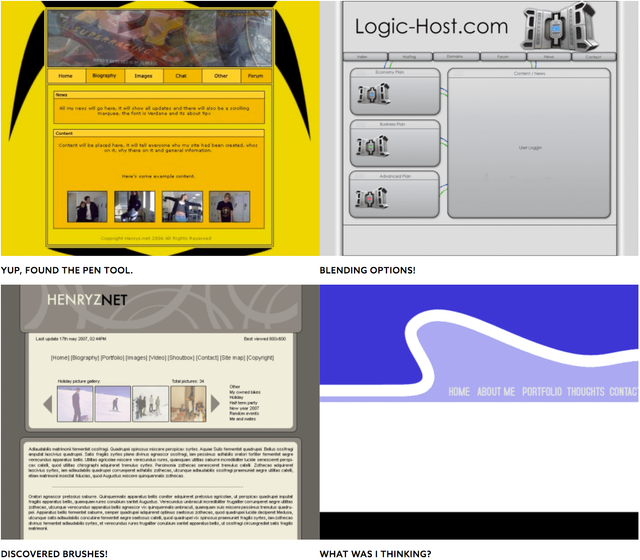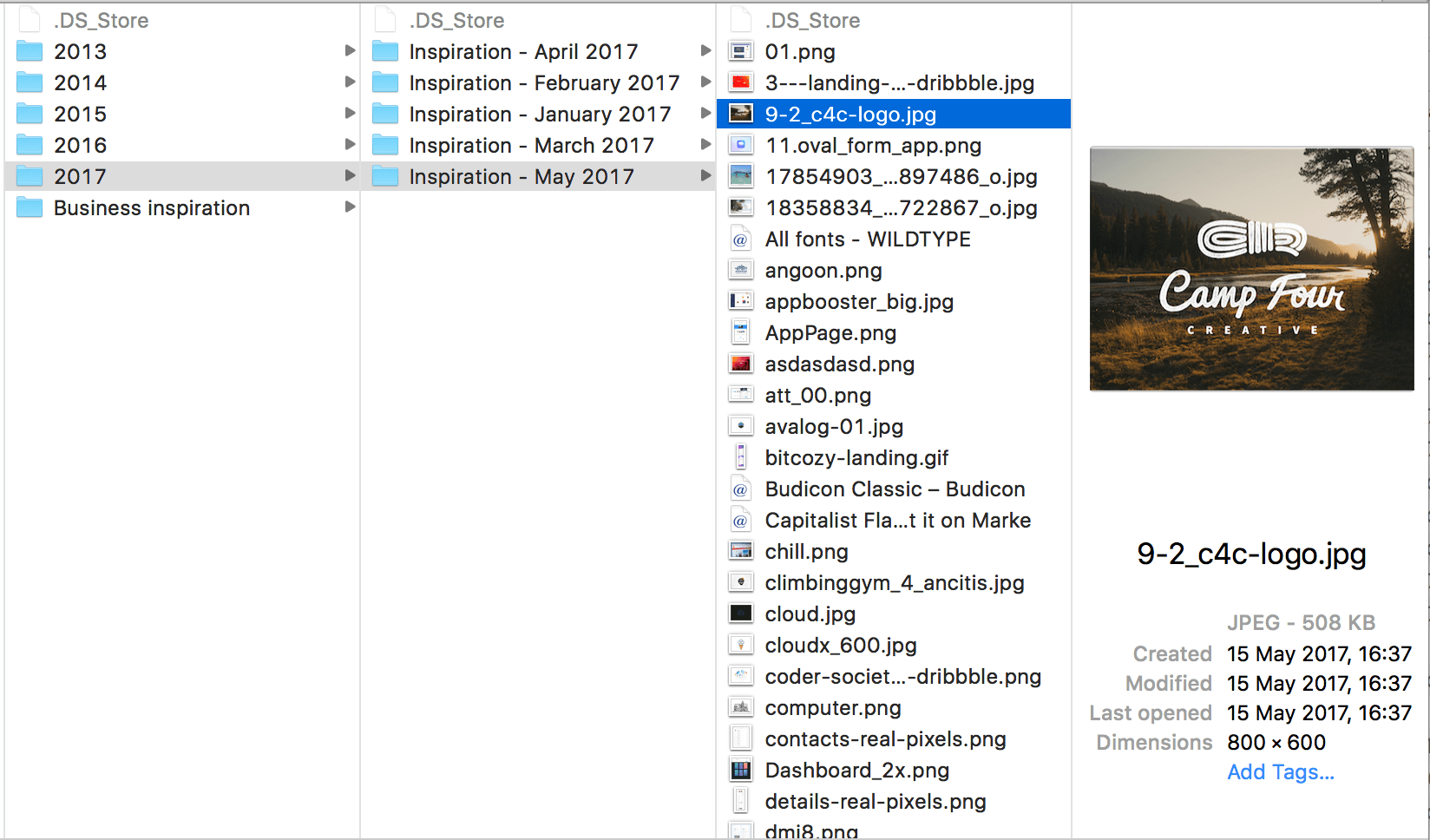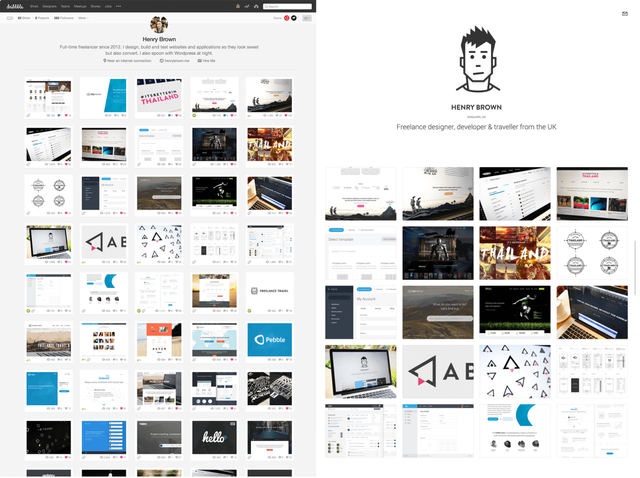How I travel and find freelance clients as a web designer & developer

About 5 years ago I made the transition to a full-time freelancer and took my work on the road at the same time. I'm often asked is where I find my clients and how I get clients whilst travelling. This post is my response on gaining clients and maintaining a consistent amount of freelance work as a designer and developer.
After about a year of building my client base, it was obvious there's a lot of work out there, more than enough, but only if you can do two simple things; good work and marketing (simply, put yourself in front of your potential clients).
I started to look for clients whilst I was studying for my degree. I already knew I wanted to be a freelancer, but had no idea really... It was frustrating, I couldn’t get my hands on the clients I wanted. Around 2007 I did land my first paying client. It was a miracle. But the road, was long, twisting and painful.
At this time, the clients paid very little, the amount of work was patchy, and it wasn't enough to live... Looking back, I can be honest with myself, and tell you my work wasn't good enough. Take a look at these beauties...

Fast forward through a few years of getting hammered every day at university and doing crappy designs for little money, I was going to be graduating from university in a years time. After university there were no more studies to fall back on, no more student grants – it was real life.
So ask yourself...
Is your work good enough?
I’m sure your designs are sweet! But are they as good, or better than your competitors? Are they worth the money you want to charge? Many of the times I’ve spoken with or seen designers having difficulty getting work, their portfolio just isn't good enough. The biggest offending factor is failure to take notice of design trends and stay on top of recent styles. Practice makes perfect and it’s usually just a case of putting more time in to research and actually creating designs.
Do you have a network of design friends? Reach out and ask for harsh critical feedback. If not, head to forums and online spaces such as Designers Talk or Reddit. The internet is harsh, ignore non-constructive feedback.
Marketing yourself, without trying
If your work is already at a high standard, the only thing you need to do now, is show it off. Good design and development skills are highly sought after. Those ladies and gentlemen in startups and big businesses are in desperate need of good designers, developers, writers, etc. It's not easy to find someone with the right skills for the job, but also someone who can communicate affectively, work as part of a team, deliver on time and be available when needed. If you can tick those boxes, you're helping them more than they're helping you.
Building on my previous point on getting your work out there, you should already be posting on social media / community sites related to your skill. For me, those websites would be Dribbble, GitHub, Designers Talk, etc. I'm showing off my work and asking for feedback and browsing other designers work to follow trends (keep an eye on popular/trending feeds) and get inspiration for my next project. Find my Dribble profile here.
The networks you participate in become your professional hub. Your future clients are there too, browsing through, looking for someone who suits their next project. They're not going to just search Google for a designer, pick the top result, and hire that person.
Personal tip: Start a folder in your Dropbox or wherever named ‘Inspiration’, at the beginning of each month create folders within like so ‘June – 2017’. Browse for inspiration every day, take screenshots and archive them monthly. You’ll refer back to these folders a lot during client projects and just when you need ideas.

Defining your potential clients
Your work is good enough. You know because you’ve been practicing, you’ve received critiques and maybe you’ve had some interest. You can’t market your services to the whole world though, it’s too broad. You need to define who your target clients are. Specialise a little. For reference, this was my list with a small description against each type.
1. Design agencies have been the source of my most reliable income. One good client of this type would be able to provide a steady income. They also provide a variety of work, from startup material to brochure site. One downside is the chain of communication between you, the agency and the end client.
2. Bloggers and travellers are high on my list. I consider myself skilful in WordPress and so bloggers come to be for help. Custom themes, plugins, all of that good stuff. I talk about travel a lot and it’s something that interests me so I think we attract each other in that way.
3. Tech startups are great for me because I love clean user interface design, thinking about solutions to problems which haven’t been answered yet and usually it gives me the opportunity to put my mark on something from scratch. One downside is the budget isn’t usually as high. I advise you don’t take shared in any company in return for work. There are of course exceptions.
4. Small/medium sized businesses are suited to me. I feel the larger corporations have more policies and points of contact in place which really hinder the creative process. Turn around times are longer, the work is more stressful – it’s not worth it for me.
Make your own list and keep in mind the type of clients you want to attract. This may influence the places you put your work to find these people, and the places you don’t. Personally, I tend to stay away from generic ‘entrepreneurs’, fashion startups, large corporations and subjects which generally don’t interest me. I felt I consistently had clients undervalue my work, give me a hard time or sometimes the subject just really isn’t interesting.
I had to work with a lot of clients before I had the freedom to be selective about the type of work I accepted.
Your portfolio
There are two main aspects to displaying your work. How you present it, and where you present it.
How you present it
Don’t just dig in to your archives and throw it all on a web page. Selectively pick the best work you have. Experiments, school work, client work – whatever it is, potential clients want to see if your style matches their vision. Keep your portfolio up to date, removing older pieces if you feel they don’t actively represent your skill set anymore.
In the past I would use a screenshot and link directly to the website I made – I quickly became frustrated with this as clients would sabotage my work by changing things themselves. After a few years I switched to showing full sized screenshots, sometimes with a link to the website if I felt the client had kept it in good condition.
Where you present it
Where you put all of your kick ass designs depends on your target market. I’m assuming you’re involved in some kind of visual design and although there are lots of options, below is my preferred list.
1. Your own portfolio – This is the most important. It’s your hub, it’s likely where you’ll be found on Google. It’s your brand. Think carefully over how you want to come across to your clients on your portfolio. I’ve opted for something very clean, very simple with little words. Letting my work do the talking has always been successful for me. Obviously link out to your design communities and social networks and provide an easy way to contact you. My post about how I became a freelancer goes in to slightly more detail on how my portfolio helped kick off my freelance career.
2. CSS Galleries – 4 years ago I created a new portfolio site, my best yet. With unique features like a timeline and animated avatar (thanks to new JavaScript skills) I was able to create something different which stood out. Then somehow I stumbled across something called CSS Galleries. These were the go to places for my inspiration at the time and so after my site was live, I decided to submit my own site to several of them (note there are now $50 services which will submit your site to about 100 galleries).
Well as it turns out, submitting my site to The Best Designs was the single most important thing I did at the beginning of my freelance career. It took me from 0-10 visits per day to 1000-2000 per day. People were actually contacting me just to tell me how nice my website is, I couldn’t believe it. It was the first time I ever got any notice for anything I’d ever made.
Most importantly I was generating several leads per day. I had to categorise my inbox folder because I couldn’t keep up which which ones I’d replied to, there were loads. I did reply to them all and as I had no work at the time, I was experimenting on how I can turn as many of them as possible in to paying clients. Only a small percentage convert, and a smaller percentage turn out to be fun to work with, but it’s a process that worked and I still look back to this event as the defining moment of my freelance career.
3. Dribbble – As primarily an interface designer, Dribbble suits me perfectly. I’m not saying it will for you, but a community with similar features are important. Dribbble is an online community not just for displaying your work, but also interacting with other designers by providing and receiving feedback via comments. It’s a perfect type of service to network, create new contacts and friends. I met a very good friend of mine, Chris Davis on Dribbble a few years ago and we went on to work a lot together, despite living on different sides of the country.
A Pro account also enables analytics and provides a ‘For Hire’ button. This combined with the fact that a lot of users are designers and agencies means there is a highly concentrated type of customer that appreciates good design. I definitely feel my highest quality leads came this way, though there were less.
4. Other services - such as Behance, Pinterest or Deviant Art – I’ve not used any of these services myself but from what I’ve seen they provide much of the functionality as Dribbble (if not more) but usually catering to different types of design and creativity. Get involved.
My solution – Personally, I’ve opted for the Dribbble route combined with a script I wrote to pull the feed in to my own website. I’m not actively seeking clients anymore but I do occasionally need to use my portfolio for a rare client or just for networking. A perfect solution could be a combination of relevant design communities such as Dribbble, Behance and Deviant art, plus your own website where customers can read a little more about you, see your work and get in touch.

My Dribbble profile is on the left and my portfolio website is on the right
Here are a couple of portfolios I’ve come across which I think do a good job at displaying work and details about the company or freelancer.
Social networking
By now the trend of being active within a community should be setting in. The internet is your Wall Street. The more people you know, the further you’ll go. By connecting with likeminded peers, when they are in the position you want to be in (too many clients), you’ll be there to pick up the clients, and vice versa.
Each channel links together like a spider web which you’ll use to catch as many quality leads as possible. Don’t over do it though, if you try to do too much, it’ll dilute the impact you can have within each community. Experiment with what works best for you and then focus.
I’m not as active on my Twitter or other social networks as I’d like to be, I barely find time to update Dribbble. I try but I only have so much time in a day. Remember that you can’t do everything so focus on what matters to you. Basically I’m encouraging you to do more of what I haven’t done enough of – connect with likeminded people.
After you have too many clients
One thing I’ve been consistently bad at throughout my years freelancing, is time management. I have guilt knowing I let a few people down on the way, especially as I was learning. It’s so easy to get excited and take on more work. I discovered that when I took on more work, I actually made less money. I couldn’t give full focus to each of my projects, it made me miserable and I’d procrastinate like you’ve never seen someone procrastinate before.
Always be upfront and honest. If you don’t have time, thank your lead for getting in touch, mention you’re fully booked but ask them to stay in touch for future projects. If you know when you’re going to be available again, make sure to include the dates. Save this customer in a spreadsheet or email folder and if work dries up, reach out to them and mention you’re now free if they still need your help.
Things I tried which didn’t work
1. 99designs
When I was at university, I actually tried to use this site to make money. Never use this site to make money. It’s spec work and you’re better than that. If you have enough time for 99designs, it’d be better spent developing your business knowledge, contributing to a design community or starting personal projects.
2. Physical advertising
I went as far as printing flyers and business cards to post around shops in my surrounding area. It was a waste of time and money because from hundreds of flyers and cards and hours posting them, it generated two low quality leads. Random advertising like this was very unlikely to reach the type of target clients I had already defined, especially as I was living in a small town in the North of England at the time.
 AY Looking back at these business cards from 2011... haha
AY Looking back at these business cards from 2011... haha
- Freelance sites such as Elance
I tried Elance, Freelancer and I think the other one was called People Per Hour and what I discovered were lots of desperate designers bidding pennies for design projects. I just can’t do a logo for $10. I’d rather have nothing. On top of that problem, the platform takes a cut of the money and it feels like such a painful process.
Finding clients who would put their trust in me without the use of one of these platforms meant more money and a much friendlier experience – especially when I delivered their work on time and on budget.
4. Ebay
Yes, I actually created listings on eBay to promote my design services. The most surprising thing is that it actually generated a few leads, though no sales. These were also low quality leads with a budget similar to the value of a tuna sandwich.
Check out this ‘cool’ eBay thumbnail I made. How could this not attract high quality clients? - That was a joke btw.

Still can’t find clients?
It’s a slow process. It takes a lot of time and effort to get the ball rolling but trust me it gets easier as your reputation and contacts grow. I couldn’t see that when I was starting out but you’ll slowly start to see clients need you, just as much as you need them.
If you still don’t have any clients yet, that’s ok. It’s time to create some of your own personal projects. You should go ahead and give your portfolio a redesign, contribute on forums, browse for inspiration, listen to freelance books. Go on Reddit, offer someone free help, see what happens.
Did I mention you could ask your family or friends of family if they need help? (Note these don't make good clients due to expectations of 'mates rates', or whatever)
After all... I believe we'll only be successful in something which we have enough motivation to do, so if you're lacking motivation or drive, maybe you just need to refocus your efforts.
What have I missed?
I hope Steemers find you soon. You have a lot to offer. Best wishes... Try introducing yourself on https://steemit.com/trending/introduceyourself I'll be looking for your posts...
I agree...good point
Thanks! I'll write something in there this evening.
Followed Henry, great to hear your journey.
Thanks, appreciate that.
I've seen you do very good post congratulations, follow me and help me please